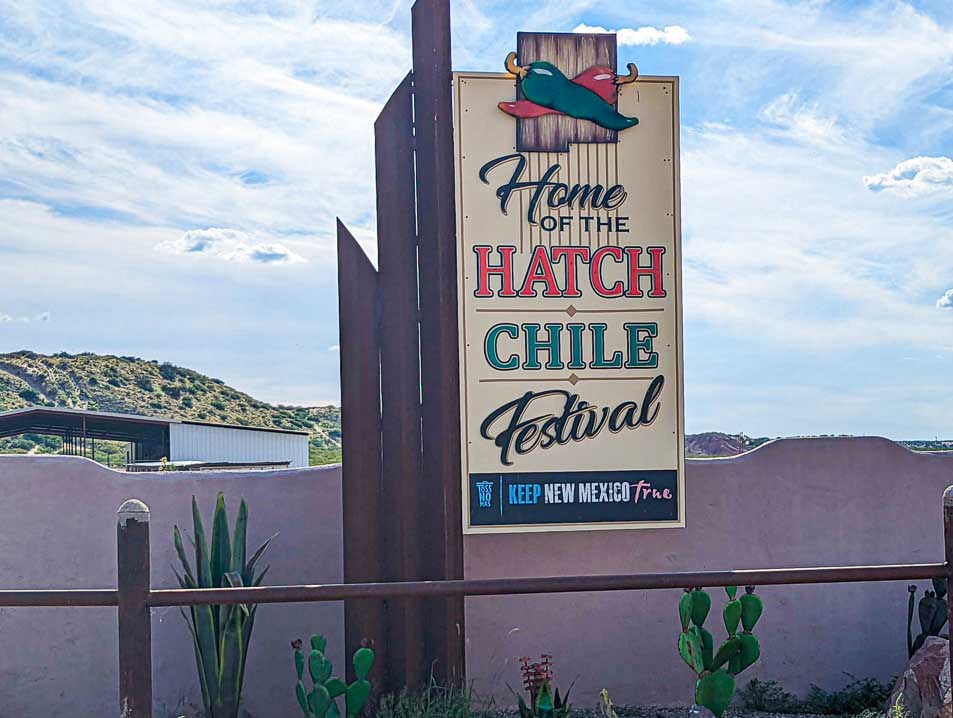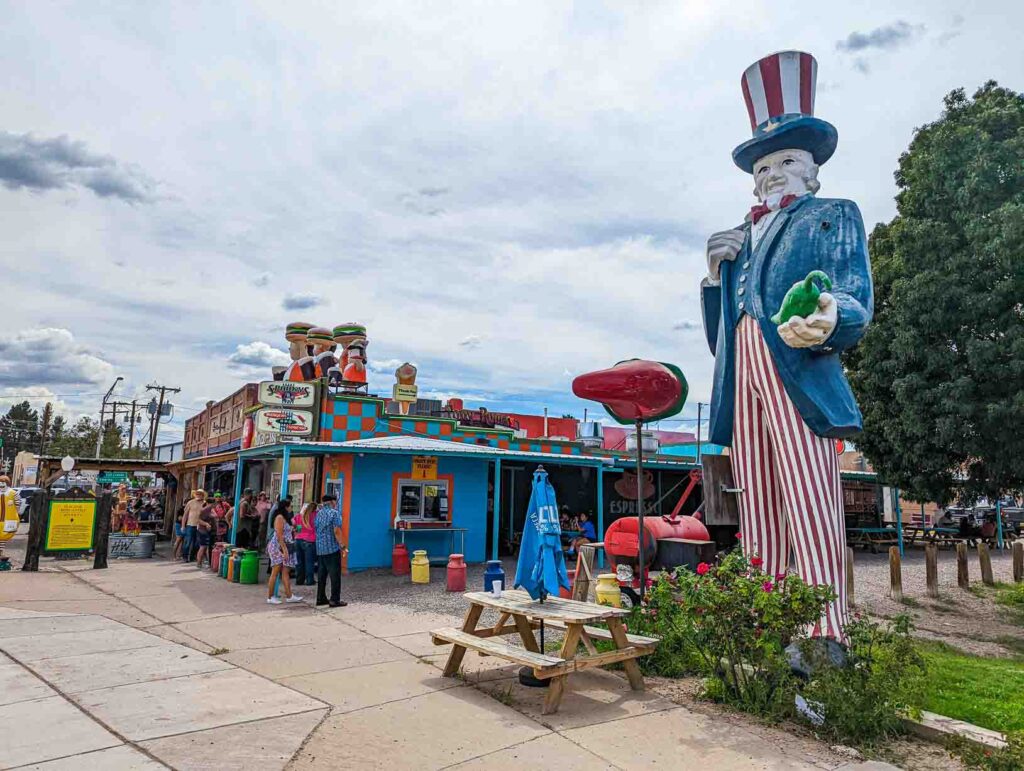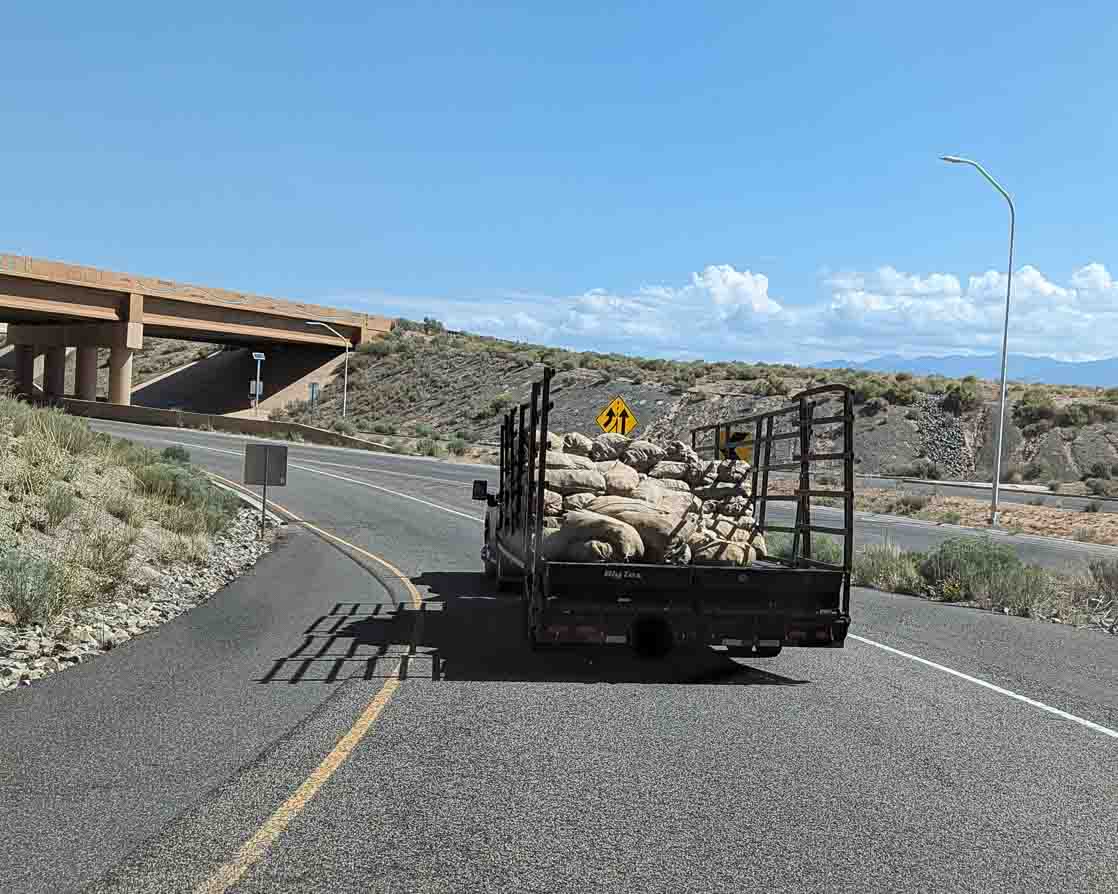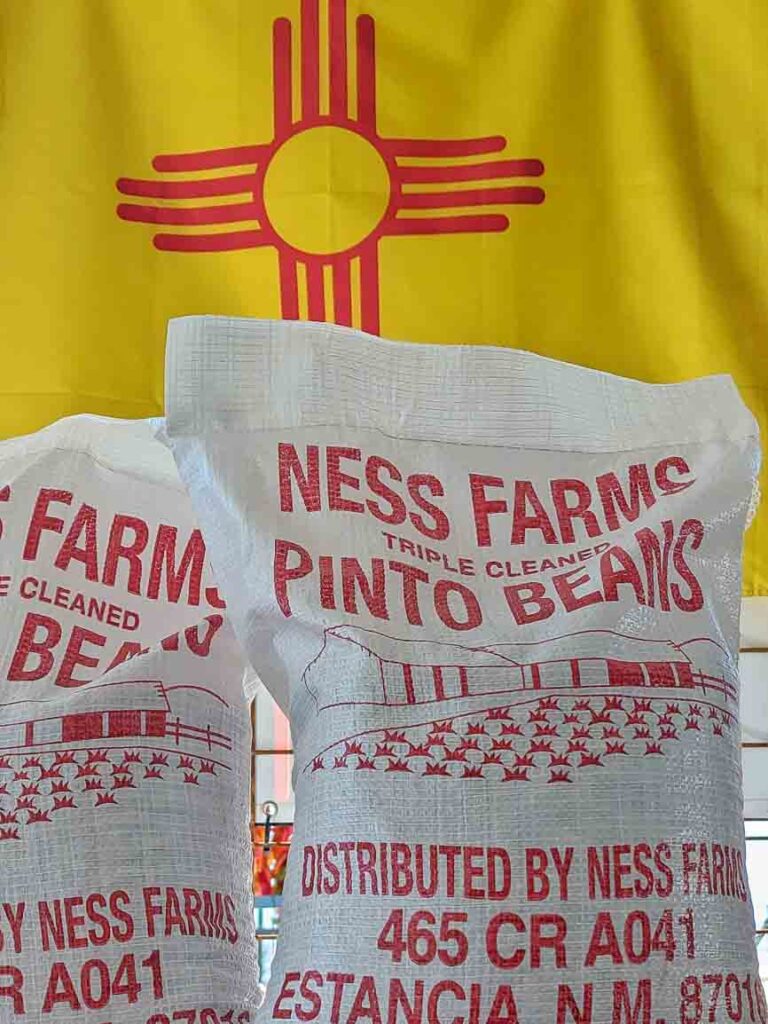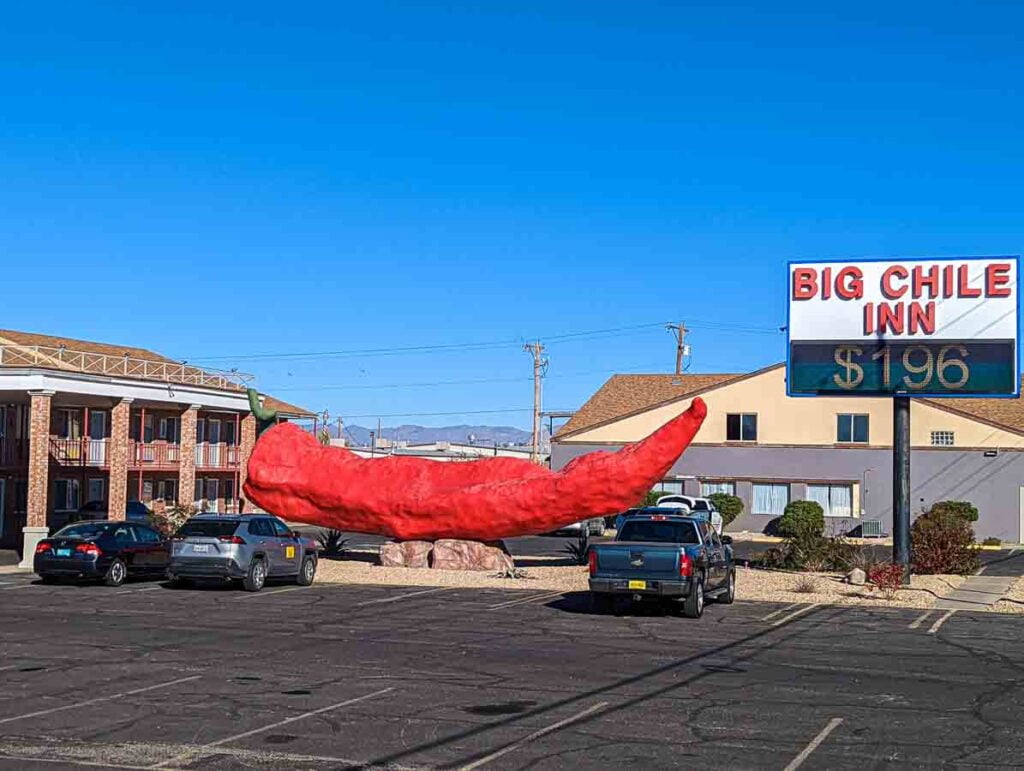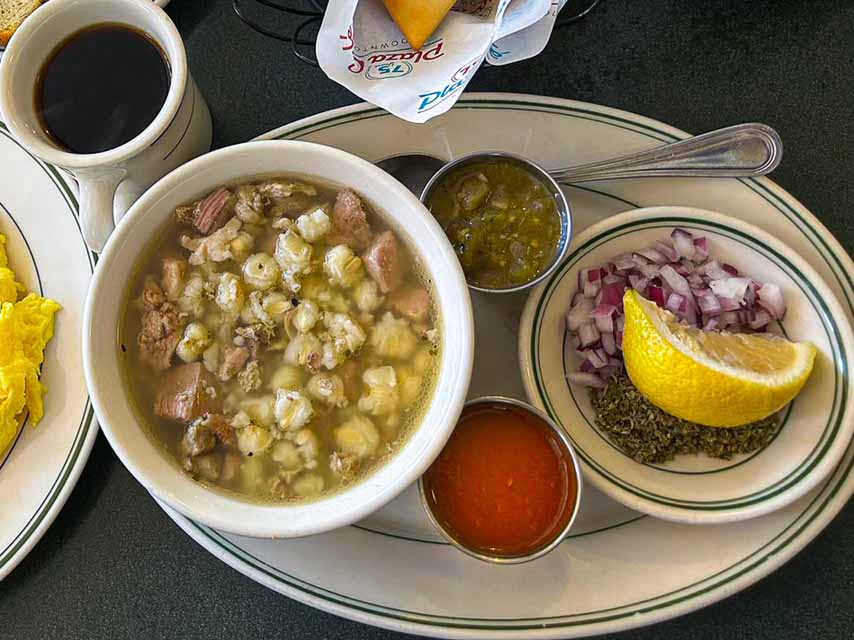Your cart is currently empty!
Category: New Mexico history
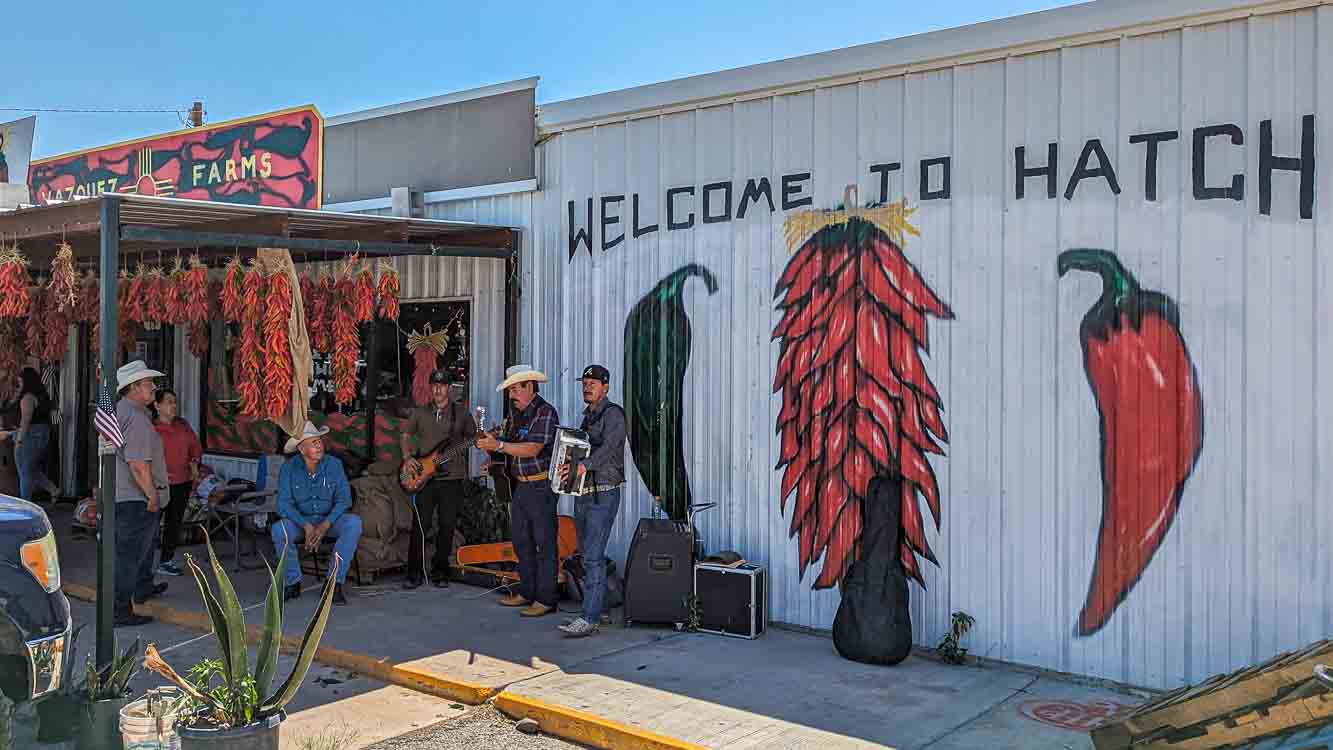
The Village of Hatch, NM
Hatch is a village in Doña Ana County, New Mexico, with a population usually hovering around 1,500 people, but that number fluctuates greatly as many migrant workers arrive in town for the chile season! Picking chile is incredibly hard work hunched over in the hot sun, and we in the chile industry greatly appreciate the pickers who come help us get the product to market. If you go during the Hatch Chile Festival, it feels more like a small city than a village! The area surrounding Hatch in Doña Ana county is one of the main agriculture areas of New Mexico, and also includes Las Cruces, where most of the research behind New Mexico chile is done at New Mexico State University.
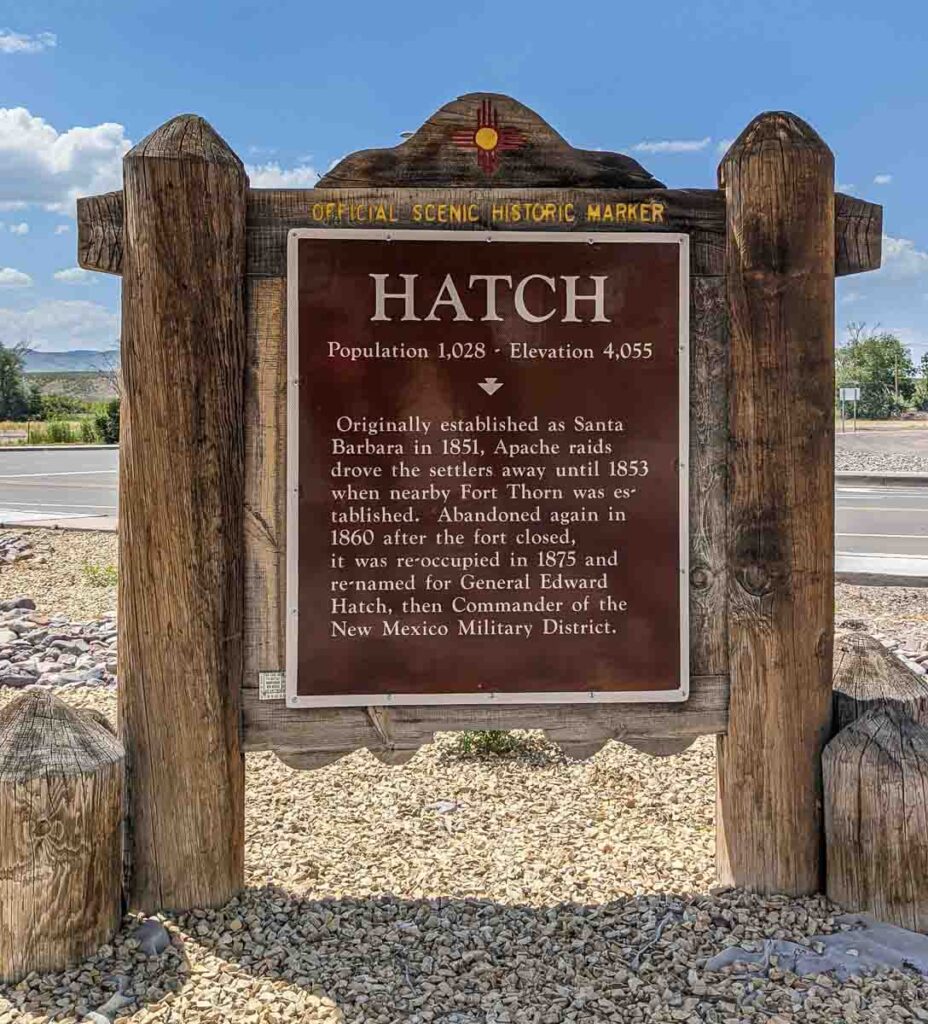
Small town, Big flavor The Chile Capital of the World
Nestled in the heart of the Rio Grande Valley, Hatch, New Mexico, has earned the moniker “Chile Capital of the World,” and for good reason. Its fertile soil, nurtured by the warm sun and mineral-rich waters of the Rio Grande, provides the perfect terroir for cultivating the world-renowned New Mexico chile. The distinct flavor profile, a harmonious blend of heat and deep flavor, sets Hatch chile apart, making them a coveted ingredient for culinary enthusiasts and spice aficionados alike.
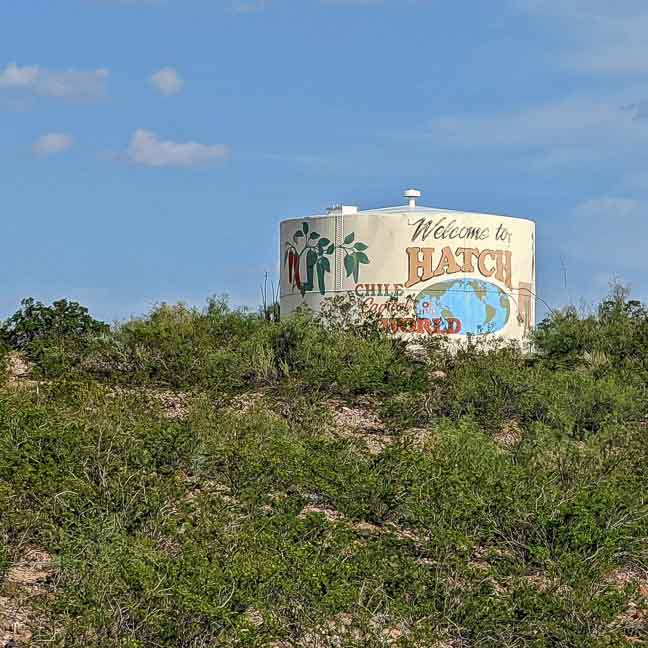
History of Hatch
Hatch’s history dates back to the 19th century when settlers began cultivating crops in the fertile valley. Due to raids from native tribes, the village was settled and abandoned several times up until 1875, when the former Union brigadier general Edward Hatch served as commander of the District of New Mexico. Due to his influence, the village of Hatch was named after him. The arrival of the Santa Fe railroad extension in the 1880s further spurred the town’s development, opening up avenues for trade and commerce. Over the years, the chile pepper emerged as a staple crop, and Hatch’s reputation as a chile-growing powerhouse began to take root. Combined with work done by NMSU legends such as Fabian Garcia, Hatch began to grow its specialty crop right around the turn of the century over 100 years ago! Today, the village stands as a testament to the hard work and dedication of generations of farmers who have cultivated the land and perfected the art of chile cultivation.

Hatch Chile Festival
The Hatch Chile Festival, held annually over Labor Day weekend, is a vibrant celebration of the town’s agricultural heritage. It draws thousands of visitors from around the globe, eager to experience the unique sights, sounds, and flavors of Hatch. The festival features chile roasting demonstrations, cooking competitions, live music performances, and a parade showcasing the region’s cultural diversity. For chile enthusiasts, the festival offers a chance to sample a wide variety of chile-infused delicacies, from savory stews and salsas to sweet desserts. It’s also a great place to get a chile ristra as a souvenir, and you can even learn how to make them too!

Tie a ristra together with your friends! Visiting Hatch
For those embarking on an I-25 road trip through New Mexico, Hatch is an essential stop just 40 minutes north of Las Cruces. The village’s quaint charm, coupled with its rich agricultural history, offers a unique glimpse into the heart of the state. Visitors can explore local farms, witness chile roasting firsthand, and savor the freshest chile peppers imaginable. The scenic beauty of the Rio Grande Valley, with its vast plains and majestic mountains, provides a stunning backdrop for outdoor adventures. Whether you’re a foodie, a history buff, or simply seeking a memorable travel experience, Hatch, New Mexico, promises to leave a lasting impression. The best time to visit Hatch is during the chile season, as the town pulses with chile roasting the whole season. Many shops are closed on Monday, Tuesday, and Wednesday, so try to come between Thursday and Sunday for the best experience!
During the chile season, you will find plenty of chile roasters blasting away in Hatch. In my personal opinion, visiting a chile roaster is one of the coolest things to do when visiting New Mexico!
Restaurants in Hatch
For visitors seeking a taste of Hatch chile at its source, the village offers a delightful culinary experience. The most famous restaurant is without a doubt Sparky’s, which makes an awesome green chile cheeseburger. You might have to wait a while if you go during a busy weekend in the chile season. In case you are looking for quicker food that can be consumed on the go, make a quick stop at B & E Burritos, their red chile burritos are awesome. For those of you looking for a place to sit down, Pepper Pot is also a nice option! Valley Cafe is also nearby. These Hatch restaurants all serve up classic New Mexican dishes featuring Hatch chile as the star ingredient. From red chile enchiladas smothered in a rich, smoky sauce to green chile cheeseburgers bursting with fresh flavor, Hatch eateries showcase the versatility and deliciousness of Hatch green chile. For perhaps the most chile dominant dish you can get, be sure to try out a chile relleno, which is a breaded, stuffed, and fried roasted green chile!

Stop at Sparky’s for a green chile cheeseburger! Location Of Hatch
Nestled along the banks of the Rio Grande River in southern New Mexico lies the village of Hatch, the undisputed “Chile Capital of the World.” With a rich agricultural history dating back centuries, Hatch has long been a hub for farming, its fertile soil and warm climate proving ideal for a variety of crops. It is also conveniently located alongside I-25 which makes it great for not only chile truck logistics, but also for a stop on a north-south New Mexico road trip!

These Hatch chile trucks are a common sight during chile season NMSU And Hatch
The village’s proximity to New Mexico State University (NMSU) in Las Cruces plays a crucial role in its chile fame. NMSU’s Chile Pepper Institute has conducted extensive research on chile pepper cultivars for over a century, and Hatch serves as the perfect testing ground for these new varieties. Farmers in Hatch collaborate with the university, ensuring a constant stream of innovation and experimentation, ultimately leading to the unique and flavorful New Mexico chile varieties we know and love today.

A Culinary Odyssey through New Mexico
Where Trails Converge and Chile Reigns Supreme
New Mexico, a land steeped in history and flavor, bears witness to centuries of cultural exchange and culinary evolution. From the ancient Pueblo people to Spanish conquistadors, Mexican settlers, and American pioneers, each group has left its mark on the state’s diverse gastronomic landscape. Central to this flavorful narrative is the chile pepper, a fiery emblem of New Mexico’s identity and the cornerstone of its cuisine.
The story of chile in New Mexico begins with the Spanish conquistadors, who introduced this fiery fruit to the region in the 16th century. The Pueblo people, the indigenous inhabitants of New Mexico, quickly adopted chile into their culinary repertoire, integrating it into their traditional dishes and developing new and innovative recipes. Over time, chile became deeply entwined with New Mexican culture, symbolizing not only flavor but also tradition, heritage, and a shared identity. Often combined with local foods such as chicos, hominy, or pinto beans, red and green chile are the quintessential ingredients in New Mexican cuisine.

Pinto beans are a staple food in New Mexico, almost as important as chile! The chile pepper’s journey through New Mexico was facilitated by a network of trails forged by Spanish explorers and settlers. El Camino Real, a historic trade route that stretched from Mexico City to Santa Fe, served as a conduit for cultural exchange and the introduction of new ingredients, including various chile varieties. The Old Spanish Trail, which connected Santa Fe to Los Angeles, further expanded the reach of chile peppers and contributed to their widespread cultivation in the modern American Southwest. El Camino Real has various landmarks around I-25 in New Mexico, and is worth a visit if you are a history buff!
Las Cruces, Albuquerque, and Santa Fe: Hubs of History and Flavor
Las Cruces
Las Cruces, situated at the crossroads of El Camino Real and the Butterfield Overland National Historic Trail, played a pivotal role in the development of New Mexico’s chile industry. The city’s fertile soil and warm climate proved ideal for cultivating chile peppers, and Las Cruces quickly became a major center for chile production and trade. It also became the site of New Mexico State University, which developed the premier chile breeding program in the world. Today, Las Cruces remains a vibrant culinary destination, renowned for its chile-infused dishes and annual Chile Drop.

This might be the only chile that makes Big Jim look small! Albuquerque
Albuquerque, strategically located along El Camino Real, and intersected by Route-66 the first modern superhighway, served as a vital trading post and cultural melting pot during the Spanish colonial era. The city’s proximity to the Rio Grande Valley, a rich agricultural region, provided ample opportunities for cultivating chile peppers and other crops. Albuquerque’s culinary scene reflects this diverse heritage, offering a wide array of chile-infused dishes that draw inspiration from Native American, Spanish, Mexican, and American traditions. Albuquerque is home to Farmers Chile Market, Albuquerque’s Original Chile roaster, and a great spot to visit during the chile season! Perhaps the most famous event in New Mexico, the Balloon Fiesta roughly doubles the size of New Mexico’s largest city.

If you visit for the Balloon Fiesta, you also will arrive during chile season! Santa Fe
Santa Fe, the oldest capital city in the United States, was a major center of Spanish colonial power and cultural influence. The city’s unique blend of Pueblo, Spanish, and Mexican traditions is evident in its diverse cuisine, which features a wide array of chile-infused dishes. From traditional stews and enchiladas to innovative chile-infused desserts, Santa Fe’s culinary scene is a testament to the enduring legacy of chile in New Mexican culture.

You can grab a bowl of posole like this at the Santa Fe Plaza Cafe Hatch, New Mexico: The Chile Capital of the World
Hatch, a small town located in the fertile Mesilla Valley, has earned the moniker “Chile Capital of the World” due to its long-standing reputation for producing high-quality chile peppers. The town’s unique combination of soil, climate, and water conditions creates an ideal environment for cultivating chile peppers with exceptional flavor and heat.

History of Hatch Chile
Dr. Fabian Garcia
The history of modern chile cultivation in Hatch dates back to the late 19th century when farmers began experimenting with different chile varieties. In the early 20th century, Dr. Fabian Garcia, a horticulturist at New Mexico State University (NMSU), played a pivotal role in developing new chile strains that were better adapted to the local climate and soil. New Mexico No. 9 was a revolutionary chile that began the New Mexican chile revolution. Garcia’s work revolutionized the chile industry in New Mexico, and his legacy continues to shape the way chile peppers are grown and consumed in the state.
Dr. Roy Harper
In the 1940s and 50s, Dr. Roy Harper, a plant breeder at NMSU, developed a new chile variety known as the New Mexico 6, which would eventually become NuMex 6-4. This variety, with its thick flesh, mild flavor, and high yield, quickly became a favorite among farmers and consumers alike. Today, the New Mexico 6-4 remains one of the most popular mild chile varieties grown in Hatch, and its distinctive flavor is synonymous with New Mexican cuisine. Not to be a one hit wonder, Dr. Harper also released Sandia chile, which went on to become the most popular hot variety of New Mexico chile for decades. Even today, it is the primary chile used to tie chile ristras. The updated version, known as Sandia select is still a great chile to roast with, and we commonly sell it along with Miss Junie as our hot green chile variety. Dr. Harper was also incredibly influential in Pecan breeding for New Mexican farmers.
Dr. Roy Nakayama
Dr. Roy Nakayama, a WW2 army veteran, is another major figure in the history of Hatch chile. He helped turn New Mexico 6 into NuMex 6-4In the 1970s, he worked extensively with farmers in the Hatch Valley to create what became the largest chile in the world, Big Jim. Big Jim chile in my experience is the chile most often sought out by name, instead of simply asking for hot, extra hot, mild, et al. He is also known for the variety R Naky, which shares the name of his family’s farm.
On the shoulders of giants
The cultivation of chile in New Mexico is one that will continue for many generations to come. There are many other major farmers and horticulturalists who work hard every day to make the next great chile variety. New Varieties such as Lumbre or Ms Junie continue to be produced, and with time we will also note the people behind them as well. Perhaps in 20 years, you might even read about me and my work in the field of New Mexico chile!
New Mexico’s Heart and Soul
The chile peppers grown in Hatch and New Mexico at large are renowned for their unique flavor profile, which is characterized by a balance of sweetness, smokiness, and heat. The Hatch chile harvest, which takes place from late summer to early fall, is a major cultural event in New Mexico, attracting visitors from around the world who come to savor the fresh, flavorful chile peppers and participate in the numerous chile festivals, most notably the Hatch Chile Festival, and celebrations.
The rich and diverse culinary traditions of New Mexico are a testament to the state’s complex history and cultural heritage. From the ancient Pueblo people to Spanish conquistadors, Mexican settlers, and American pioneers, each group has contributed to the creation of a unique and flavorful cuisine that is both rooted in tradition and open to innovation.
The chile pepper, a fiery symbol of New Mexico’s identity, stands at the heart of this culinary tapestry. Its journey through time and space, facilitated by historic trails and the tireless efforts of dedicated individuals, has shaped the way New Mexicans eat, cook, and celebrate. Whether you’re savoring a bowl of red chile posole in Santa Fe, indulging in a green chile cheeseburger in Albuquerque, or attending a the chile festival in Hatch, you’re experiencing a culinary legacy that is as vibrant and diverse as the land itself.

Red or Green, New Mexico has it all! The story of chile in New Mexico is a story of resilience, adaptation, and creativity. It is a testament to the power of food to connect people, cultures, and traditions. As New Mexicans continue to celebrate their culinary heritage, they are also creating a legacy for future generations. By preserving traditional recipes, supporting local farmers and producers, and embracing culinary innovation, New Mexicans are ensuring that their food culture will continue to thrive for years to come.
